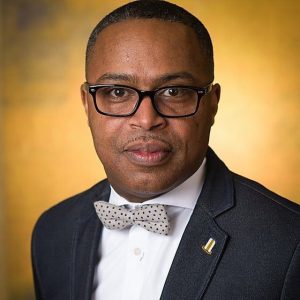
Sixty years ago, young protesters spilled out into the streets of Birmingham, Alabama, to oppose segregation. More than 1,000 Black students, ranging in age from seven to 18, gathered at the 16th Street Baptist Church. After getting instructions, they marched in groups of 10 to 15 at a time carrying picket signs. On the first day of the protest, police arrested or detained hundreds of children. The next day, City Commissioner of Public Safety Eugene “Bull” Connor ordered police and fire departments to brutalize the children. They wielded batons, sprayed fire hoses and used trained police dogs to attack the children—all to no avail. The protesters still marched on singing “Ain’t Gonna Let Nobody Turn Me Around.”
The attacks on the young troops of the Children’s Crusade, as it became known, shocked the public. Images of children and teens under attack appeared in newspapers and on TV, sparking outrage across the nation and around the world. The images are still unsettling when you come across them at the National Museum of African American History in Washington, DC. I’ve seen them during the time I’ve served as CEO of the Council, and they strike a deep, personal chord in me as a Black man, father and native of Birmingham, where the march took place.
In addition, my family has a strong legacy in the fight for civil rights. My father braved vicious police dogs and spent time in a Birmingham jail when he marched against segregation in the sixties. He shared these experiences with me while I was growing up, and I have shared them with my daughter. In recent years, she carried on the family tradition by marching in the George Floyd protests, as I’m proud to say. And seeing her sense of conviction makes me realize how crucial it is for Black children to know their history and take pride in what their forbears have achieved.
Visits to museums, like the one in DC, are a great way to mark Black History Month with children. A good museum is more than a building that guards artifacts under glass. It also serves as a gateway to the trials of the past and a guide to the milestones yet to be made. “My kids need to know that Black is brilliance,” said Aaron Allen, a dad who brought his children to hear the African folk tale of Anansi the Spider at the Providence Children’s Museum. The museum has partnered with the Rhode Island Black Storytellers to keep Black oral traditions alive, and that matters, as Allen pointed out. “It’s important that my son feels validated in his identity, so I would love for the museum to hold year-round events where my child can get exposed to all kinds of stories about the Black experience”—a subject to which I’ve devoted some time.
I spent several years teaching a course on the Black experience at Miles College in Fairfield Alabama. So, I’m keenly aware of the contributions that Black people have made to our nation and shared them with my students. The many accomplished Black figures include mathematician Benjamin Banneker, who helped plan the layout of Washington, DC; James Baldwin, a member of the Harlem Renaissance and an acclaimed writer in many genres; pioneering film makers Oscar Micheaux and Spike Lee, along with President Barack Obama, who signed the Affordable Care Act into law, providing health insurance to millions. And African Americans have also made an important mark on the fields of education and economics, activism and aviation, plus many other professions.
All children can learn about Black heroes and pioneers in Chicago at the Bronzeville Children’s Museum, the nation’s first and only African American children’s museum. It offers artwork, information and interactive exhibits on accomplished Black figures: former NASA mathematician Katherine Johnson, former poet laureate of Illinois Gwendolyn Brooks, light bulb innovator Lewis Latimer, former Chicago Mayor Harold Washington, inventor of the traffic light Garrett A. Morgan and anti-lynching crusader Ida B. Wells.
Exposing children to the “rich contributions, culture and heritage of African Americans and people of Africa” has been the museum’s mission since 1993, said Peggy Montes, a former teacher who founded the Bronzeville museum. “The impetus behind this was to make certain that children of all ages, but especially African American children, would have knowledge of their history, from whence they have come, and what they can do in terms of achieving their potential.” Telling the truth about the Black experience over time, as Montes explained, “has been the museum’s struggle for the past 25 years.”
The broader struggle that Black people have faced comes alive in my home town’s historic district. It includes the Birmingham Civil Rights Institute and Kelly Ingram Park, which served as a meeting place for activists and a flashpoint for police violence. The park now offers exhibits that honor protesters arrested by the law, clergymen who joined their cause and the jailed children who marched for social justice. Visitors to the district can also learn about the tragedy that struck several youngsters at the 16th Street Baptist Church, now a national heritage site available for tours.
Photos of the church’s twin towers, pointed domes and brick facade appeared in newspapers nationwide after September 15, 1963, when a bomb exploded during a youth leadership meeting in the basement. The explosion killed Denise McNair, who was just 11, and Addie Mae Collins, Cynthia Wesley and Carole Robertson, all only 14 years old. And news of the tragedy led President John F. Kennedy to call for the passage of the Civil Rights Act, which was signed into law by President Lyndon Baines Johnson in 1964.
The images of children who joined the cause still have the power to move minds and hearts. And the National Civil Rights Museum in Memphis, Tennessee, inspires visitors to be change makers by honoring people who stood up boldly for freedom and justice. The exhibits feature photos of folks both famous and unknown, like that of a young girl holding a sign that reads “Can a man love God and hate his brother?”
Children will have similar questions when parents take them to Equal Justice Initiative’s Legacy Museum in Montgomery, Alabama. The museum depicts the history of Black people in the U.S., starting with slavery, through Jim Crow laws and segregation, to current issues of mass incarceration and police violence. And while going through the exhibits, children might not grasp everything they see. Still, “children have a lot of instincts about what is fair and unfair,” said Sia Sanneh, a criminal justice lawyer and former teacher who helped develop the museum’s content. “Our job is to equip young people with facts” to spark discussions about race, power and inequity in the country today.
So, visits to museums like this can plant a seed and lead young learners to later pose questions that count. What does it mean to be Black in our nation? What can we do to heal the wounds of the past? And history gives some answers by showing our children that they can make a difference, like Birmingham’s young crusaders. Their pictures in museums convey a message about the power of righteous protest. And understanding the past will help children undertake future steps needed to build a better world. When you march against what’s wrong, as history shows, you shouldn’t let anybody turn you around.

